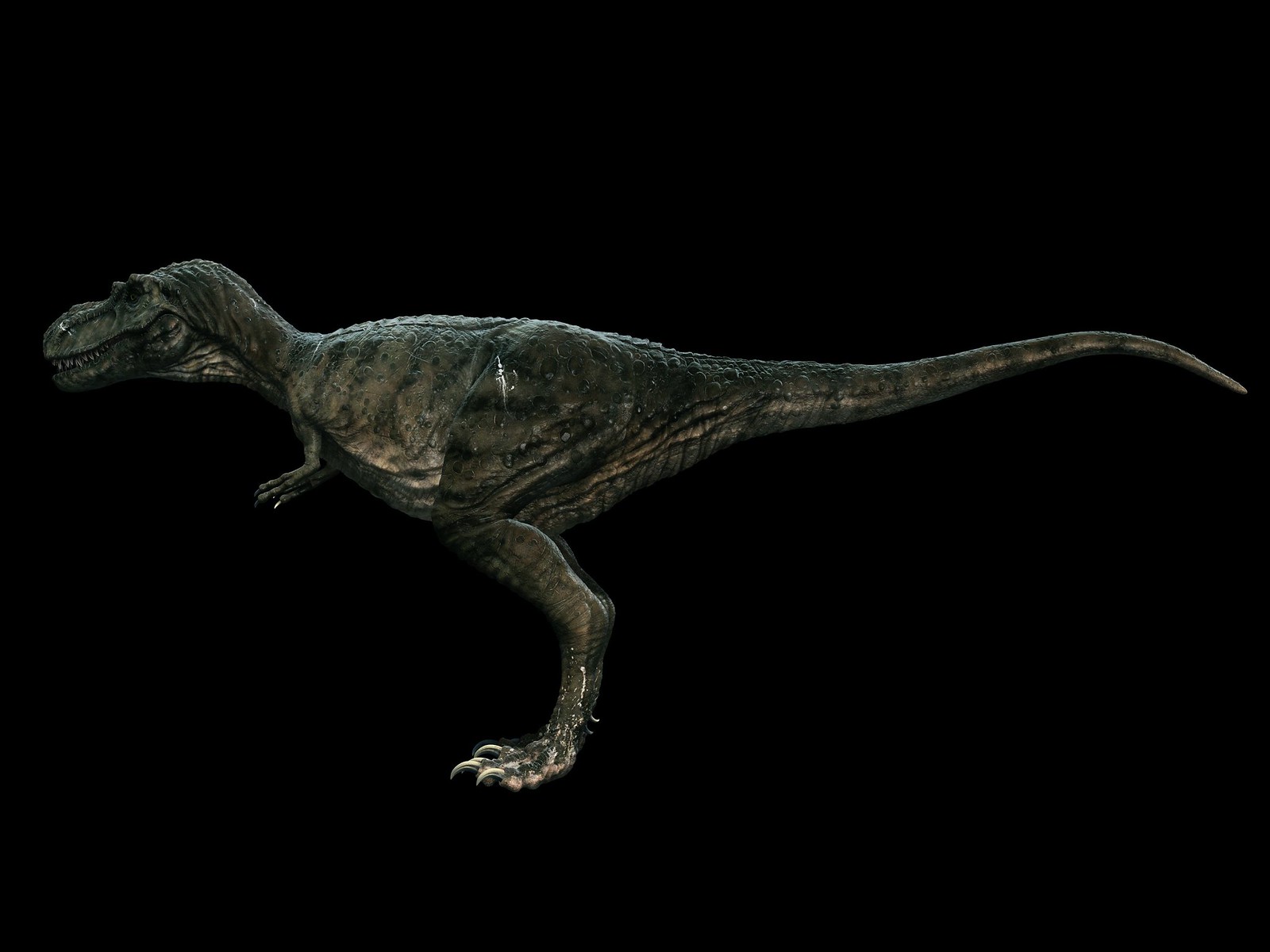
Gorgosaurus libratus is a species of dinosaur found in Alberta, Canada, named by Lawrence Lambe in 1914. The name Gorgosaurus comes from the Greek for "dreadful lizard".
It is a bipedal carnivore weighing up to 2400 kg and 8-9 m long. It is proved to have lived 76.6 to 72 million years ago.
| Profile | Gorgosaurus |
|---|---|
| Prehistoric Era | Upper Cretaceous, about 76.4 to 72 million years ago |
| Order | Saurischia |
| Suborder | Theropoda |
| Family | Tyrannosauroidea |
| Tribe | Albertosaurinae |
| Genus | Gorgosaurus |
| Species | Gorgosaurus libratus |
| Height | 3.8 meters |
| Length | 8 - 9 meters |
| Weight | 2.5 tons |
| Territory | Canada |
Gorgosaurus libratus is a member of the family Tyrannosauridae. G. libratus lived in what is now North America during the Late Cretaceous period, which ended about 65 million years ago. This dinosaur has a number of features not found in other tyrannosaurs, such as the shape of its skull and its small, almost tiny arms that ended in only two fingers.
His skull, like other tyrannosaurids, was large compared to his body size.
Gorgosaurus spent the first half of its life in the juvenile phase. As a juvenile, its size was only about 70% of its adult size. Over the next 4 years, it developed to its maximum size, gaining about 110 kg per year. This growth rate is similar to that of Albertosaurus. However, compared to other tyrannosaurids, such as Daspletosaurus and Tyrannosaurus, this growth rate is slower.
According to a 2012 scientific paper, Gorgosaurus was able to exert a bite force of around 42,000 newtons.
By comparison, a lion develops a biting force of about 3,380 newtons per square centimeter.
Based on these biting forces, scientists suggest that they probably didn't break bones as often as other large theropods like Tyrannosaurus rex.
It is more likely that they ignored the bones and focused on the meat of their prey.
A narrower snout indicates weaker biting power.
At the time Gorgosaurus lived, North America was divided in half by an inlet, the Western Interior Seaway.
The climate was subtropical, but had periodic dry periods. These dry periods led to a shortage of food, which in turn led to mass die-offs of large herds of dinosaurs.
The vegetation in its habitat consisted of higher plants such as conifers. Ferns, tree ferns, and angiosperms made up the low vegetation.
This lush vegetation was the food base for huge ceratopsid herds and equally large groups of saurolophines and lambeosaurine hadrosaurs.
The idea of niche partitioning applies to both carnivores and herbivores.
Gorgosaurus probably specialized in hunting different types of prey than its larger and stronger cousins, the Tyrannosauridae.
Living alongside Gorgosaurus was the stronger and more powerful Daspletosaurus (Daspletosaurus torosus) - "fearsome lizard."
This dinosaur was up to 1,000 kilograms heavier than Gorgosaurus.
It probably preyed on larger horned dinosaurs. The lighter and faster tyrannosaurs, such as Albertosaurus and Gorgosaurus, specialized in small hadrosaurs and pachycephalosaurs.
The genera Gorgosaurus and Albertosaurus are two genera of tyrannosaurids and are often compared to each other. This is due to the striking similarities in their skulls and skeletons, as well as the fact that the two genera coexisted at the same time and place.
Gorgosaurus libratus belongs to the family Tyrannosauridae and is known from the Late Cretaceous of North America. It is known from many partial and complete skeletons, including one of the largest known tyrannosaurid skulls.
The name Gorgosaurus means "dreadful lizard," while libratus is Latin for "smooth" or "polished."
Albertosaurus is also a member of this family.
It seems that Gorgosaurus has slightly longer legs than Albertosaurus.
The size, shape and jaw length of the skull was also different. Albertosaurus had a slightly smaller skull. Its snout, on the other hand, was slightly shorter and stronger, which may have allowed this dinosaur to bite harder.
Comparing the length of the bones of the hind legs of G. libratus and Albertosaurus, scientists conclude that this dinosaur may have had a slightly longer stride.
The smaller size of the Gorgosaurus specimens compared to the largest Albertosaurus fossils suggests that Gorgosaurus may have been more agile and somewhat faster. Its top speed was probably about 48 kilometers per hour.
Image source: ©Julian Johnson, CC BY-SA 2.0 https://creativecommons.org/licenses/by-sa/2.0/
Size comparison: User:Dinoguy2, CC BY-SA 3.0 https://creativecommons.org/licenses/by-sa/3.0, via Wikimedia Commons
Skeleton: Sebastian Bergmann from Siegburg, Germany, CC BY-SA 2.0 https://creativecommons.org/licenses/by-sa/2.0, via Wikimedia Commons